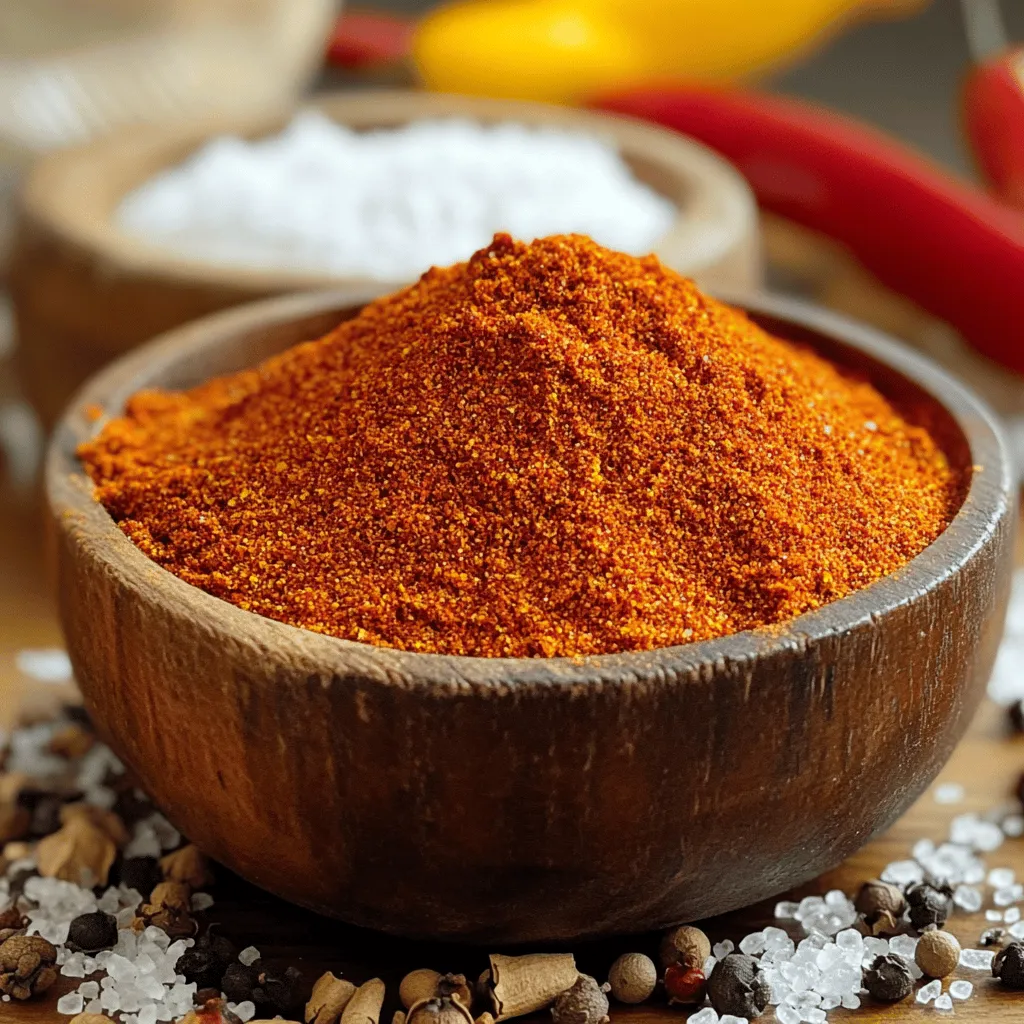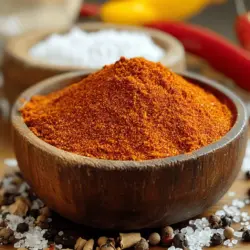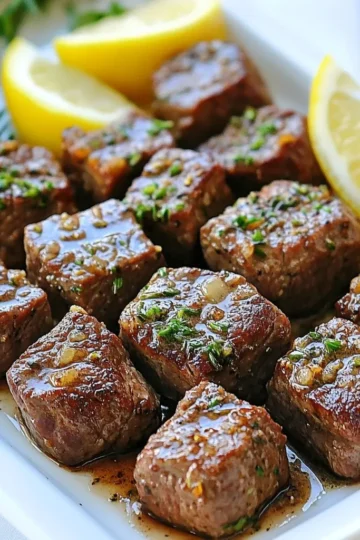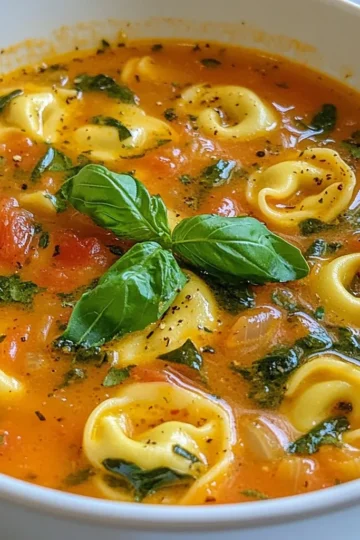Introduction
Welcome to the vibrant and flavorful world of homemade fajita seasoning! If you’ve ever craved the bold, smoky flavors of a classic fajita, you’re in for a treat. Making your own fajita seasoning not only brings authenticity to your dishes but also offers a convenient and cost-effective alternative to store-bought options. With just a few simple ingredients, you can create a spice blend that enhances the flavor of various proteins and vegetables, making it a versatile staple in any kitchen.

In recent years, there has been a growing trend towards homemade seasonings. This shift is largely due to the desire for fresher flavors and the avoidance of preservatives and artificial ingredients often found in pre-packaged mixes. By preparing your own fajita seasoning, you can customize the flavor profile to suit your taste preferences and dietary needs, ensuring every meal is a fiesta of flavor.
Understanding Fajita Seasoning
Fajita seasoning has its roots in traditional Mexican cuisine, specifically associated with the popular Tex-Mex dish known as fajitas. Originally, fajitas were made with grilled skirt steak, but over time, the concept has evolved to include a variety of proteins such as chicken, shrimp, and even plant-based options. The seasoning blend itself is a medley of spices that enhance the natural flavors of the grilled meats and sautéed vegetables, making it a favorite choice for home cooks and restaurant chefs alike.
The term “fajita” actually refers to the cut of meat used in the dish, and the seasoning plays a crucial role in elevating the overall taste. Traditional fajita seasoning typically includes a mix of chili powder, cumin, garlic, onion, and other spices, all of which complement the smoky char of grilled ingredients. This flavorful blend is not just limited to fajitas; it can also be used in tacos, burritos, casseroles, and even as a marinade for roasted vegetables, making it a versatile addition to your culinary repertoire.
Essential Ingredients for Fajita Flavor Fiesta
To create the perfect fajita seasoning blend, let’s delve into the essential ingredients that contribute to its distinctive flavor. Each spice brings its own unique character to the mix, creating a harmonious balance that enhances your dishes.
Chili Powder
Chili powder is the backbone of fajita seasoning, providing a rich, spicy flavor that is quintessential to Mexican cuisine. It often consists of ground dried chilies, such as ancho or cayenne, combined with other spices like garlic powder and cumin. Beyond its delightful taste, chili powder also offers health benefits, including antioxidant properties and potential anti-inflammatory effects. If you prefer a milder flavor, opt for a blend with less heat or adjust the amount according to your preference.
Paprika
Paprika is another key ingredient in fajita seasoning, contributing both color and flavor. There are different types of paprika, including sweet, smoked, and hot varieties, each with its own unique taste. Sweet paprika adds a mild sweetness, while smoked paprika imparts a deep, smoky flavor reminiscent of outdoor grilling. For a well-rounded fajita seasoning, consider using a combination of sweet and smoked paprika to achieve a complex flavor profile.
Ground Cumin
Ground cumin is a warm, aromatic spice that adds depth and earthiness to fajita seasoning. It is often used in Latin American and Middle Eastern cuisines, making it a staple in many spice blends. Cumin not only enhances the overall flavor of your dishes but also has a range of culinary significance, including aiding digestion and providing anti-inflammatory benefits. Its warm notes help to round out the spice blend, making it an essential component of fajita seasoning.
Garlic Powder and Onion Powder
Garlic powder and onion powder are two ingredients that elevate the savory qualities of fajita seasoning. Garlic powder provides a robust, pungent flavor that enhances the overall taste, while onion powder brings sweetness and depth. Both ingredients are convenient and shelf-stable alternatives to fresh garlic and onions, allowing you to create deliciously seasoned dishes quickly and easily. Together, they form a strong aromatic base for the seasoning blend.
Dried Oregano
Dried oregano is often used in Mexican cooking, adding an earthy and slightly bitter flavor that pairs beautifully with other spices. It has a distinct aromatic quality that enhances the overall profile of fajita seasoning. The combination of oregano with chili powder, cumin, and paprika creates a well-rounded blend that captures the essence of traditional Mexican flavors. Additionally, oregano is known for its antioxidant properties, making it a healthy addition to your spice mix.
Cayenne Pepper
Cayenne pepper adds a kick of heat to the seasoning blend, allowing you to adjust the spiciness level to your liking. This fiery spice is made from ground cayenne peppers and can vary in heat intensity. If you enjoy a bit of heat in your cooking, add a pinch of cayenne to the seasoning mix. Alternatively, if you prefer milder flavors, start with a smaller amount and adjust as needed. The versatility of cayenne pepper makes it an essential component of fajita seasoning.
Salt and Black Pepper
Salt and black pepper are fundamental seasonings that enhance the overall flavor of any dish. In fajita seasoning, salt helps to bring out the flavors of the other spices, while black pepper adds warmth and complexity. When making your seasoning blend, be mindful of the amount of salt used, especially if you’re seasoning meats or vegetables that may already contain salt. A balanced approach will ensure that your fajitas are flavorful without being overly salty.
Sugar
While it may seem unusual to include sugar in a savory spice blend, it plays a crucial role in balancing flavors. A small amount of sugar can help to counteract the heat from chili powder and cayenne, creating a more harmonious flavor profile. Additionally, sugar can enhance the caramelization process when grilling meats or vegetables, resulting in a beautifully charred exterior. Just a teaspoon or two in your fajita seasoning will help achieve that perfect balance.
Step-by-Step Instructions for Preparation
Now that we’ve explored the essential ingredients that make up this vibrant fajita seasoning blend, let’s dive into the simple and quick process of creating it. With just a few minutes and minimal effort, you can whip up a batch of homemade fajita seasoning that will elevate your culinary creations.
Mixing the Ingredients
1. Gather Your Ingredients: Start by measuring out each of the ingredients needed for your fajita seasoning blend. Having everything prepped and ready to go will streamline the process and ensure that you don’t forget anything.
2. Combine in a Bowl: In a medium-sized mixing bowl, combine the chili powder, paprika, ground cumin, garlic powder, onion powder, dried oregano, cayenne pepper, salt, black pepper, and sugar.
3. Whisk Together: Using a whisk or a fork, mix the ingredients together until they are evenly combined. It’s essential to break up any clumps, especially from the spices, to ensure a smooth and consistent blend.
4. Taste and Adjust: Before storing, it’s a good idea to taste the seasoning blend. If you prefer more heat, add a bit more cayenne pepper. If you want it sweeter, add a touch more sugar. Remember, this blend is customizable, so feel free to adjust according to your flavor preferences.
Storage Solutions
Once your fajita seasoning is mixed to perfection, it’s important to store it properly to maintain its freshness and flavor. Here are some best practices for storing your homemade fajita seasoning:
1. Choose the Right Container: Use an airtight container, such as a glass jar with a tight-fitting lid or a resealable plastic bag. This will help keep moisture out and preserve the potency of the spices.
2. Label the Container: Don’t forget to label your container with the name of the seasoning and the date it was made. This will help you keep track of freshness and ensure you use it within a reasonable time frame.
3. Store in a Cool, Dark Place: Keep your seasoning blend in a cool, dark cupboard or pantry away from direct sunlight and heat sources. Proper storage will help extend the shelf life of your spices.
Homemade fajita seasoning can last for several months when stored correctly, but for the best flavor, aim to use it within 3 to 6 months.
Using Fajita Seasoning in Your Cooking
With your homemade fajita seasoning ready, the possibilities are endless. From marinating chicken and steak to seasoning roasted vegetables or adding a kick to soups and stews, this versatile blend can enhance a wide range of dishes.
In the following sections, we will explore various ways to incorporate your fajita seasoning into delicious meals, ensuring that every bite is bursting with flavor. Stay tuned for more exciting tips and recipes that will bring your Fajita Flavor Fiesta to life!

Incorporating Fajita Seasoning into Meals
Fajita seasoning is not just for traditional fajitas. This versatile blend can elevate a variety of meals, allowing for endless culinary creativity. Whether you prefer chicken, beef, shrimp, or a plant-based option like tofu, fajita seasoning can enhance the flavor profile of your dish, making it a delightful choice for any meal.
Protein Options
Chicken: The mild flavor of chicken pairs beautifully with fajita seasoning. For optimal results, use boneless, skinless chicken breasts or thighs. The seasoning brings out the natural juiciness of the chicken while adding a zesty kick.
Beef: For beef lovers, fajita seasoning adds a robust flavor to cuts like skirt steak or flank steak. These cuts are ideal for fajitas as they are tender and absorb the seasoning well.
Shrimp: Shrimp is another fantastic option for incorporating fajita seasoning. The quick cooking time and the ability of shrimp to soak up flavors make it a perfect match. Just toss the shrimp in the seasoning before cooking for a burst of flavor.
Tofu: For those seeking a vegetarian or vegan option, tofu is an excellent protein to pair with fajita seasoning. Extra firm tofu works best, as it holds up well during cooking. Marinating it in the seasoning will infuse the tofu with flavor, making it a satisfying alternative.
Vegetable Pairings
Fajita seasoning is not just limited to proteins; it can also enhance the taste of various vegetables. Here are some ideal vegetable pairings:
- Bell Peppers: These colorful vegetables add sweetness and crunch. Use a mix of red, yellow, and green bell peppers for a vibrant dish.
- Onions: Sautéed onions are a classic fajita ingredient that adds depth to the dish. Their natural sweetness caramelizes beautifully with the seasoning.
- Zucchini: Zucchini offers a mild flavor and tender texture that complements the spices in the fajita seasoning.
- Mushrooms: Sautéed mushrooms add a meaty texture and umami flavor, making them a great addition to fajita dishes.
Recommended Ratios
To ensure your meal is perfectly seasoned, it’s essential to use the right amount of seasoning. As a general guideline, use about 2 tablespoons of fajita seasoning per pound of protein or vegetables. For a more robust flavor, consider increasing the amount slightly, but be cautious not to overpower the natural flavors of your ingredients.
Marinating for Maximum Flavor
Marinating proteins in fajita seasoning significantly enhances the taste and tenderness of the dish. Here’s how you can maximize flavor absorption through effective marination.
Timing for Marination
The timing of your marination can make a remarkable difference in flavor. For chicken and beef, marinate for at least 30 minutes, but for best results, aim for 2-4 hours. Shrimp requires less time; a 15-30 minute marination is sufficient. When marinating tofu, let it sit for at least 30 minutes, but overnight is ideal for deeper flavor penetration.
Best Practices for Marinating
1. Use a resealable plastic bag: This allows the seasoning to coat the protein evenly and minimizes mess.
2. Add an acid: Incorporating lime juice or vinegar in your marinade helps tenderize the protein and enhances flavor absorption.
3. Refrigerate: Always marinate proteins in the refrigerator to prevent bacterial growth.
4. Massage the marinade: For proteins like tofu, gently pressing the marinade into the surface can help flavor penetration.
Creative Serving Suggestions
Once you have your protein and vegetables flavored with fajita seasoning, consider these creative serving options to showcase your delicious meal.
Fajitas
The classic presentation of fajitas involves serving the seasoned protein and sautéed vegetables on a sizzling hot plate, accompanied by warm tortillas. Provide a variety of toppings such as guacamole, sour cream, shredded cheese, and fresh salsa. This interactive dining experience allows everyone to create their own fajita wraps, making it a fun and engaging meal.
Bowl Meals
Fajita bowls are a trendy and nutritious way to serve your fajita-flavored ingredients. Start with a base of rice or quinoa, then layer on the marinated protein, sautéed bell peppers, onions, and black beans. Top with fresh avocado, salsa, and a sprinkle of cilantro for a refreshing twist. These bowls are not only visually appealing but also customizable to suit various dietary preferences.
Tacos and Wraps
Elevate your tacos by using fajita-seasoned protein as the star ingredient. Fill corn or flour tortillas with the seasoned meat or tofu, add grilled vegetables, and top with your favorite condiments. For wraps, use a large tortilla or lettuce leaves, filling them with the seasoned ingredients and rolling them up for a portable meal option.
Nutritional Benefits of Homemade Seasoning
Creating your own fajita seasoning blend at home not only enhances flavor but also offers several health benefits compared to store-bought options.
Lower Sodium Options
Many commercial seasoning blends contain high levels of sodium, which can contribute to health issues such as hypertension. By making your own fajita seasoning, you can control the salt content, making it a healthier choice for your meals.
Control Over Ingredients
Homemade seasoning allows you to know exactly what goes into your blend. You can customize it to exclude preservatives, artificial flavors, and allergens, ensuring a clean and wholesome ingredient list. This transparency is beneficial for those with dietary restrictions or those who prefer to consume natural foods.
Conclusion
Making your own fajita seasoning is a delightful way to enhance the flavor of various dishes while reaping the health benefits of lower sodium content and ingredient control. The versatility of this seasoning blend allows you to experiment with different proteins, vegetables, and serving styles, making it a staple in your culinary repertoire.
Whether you’re preparing classic fajitas, vibrant bowls, or tasty tacos, fajita seasoning adds a burst of flavor that will please your palate. So, gather your ingredients, whip up a batch of homemade fajita seasoning, and embark on a flavorful journey in your kitchen. Discover how this simple blend can transform your meals and inspire creativity in your cooking endeavors.







Leave a Reply